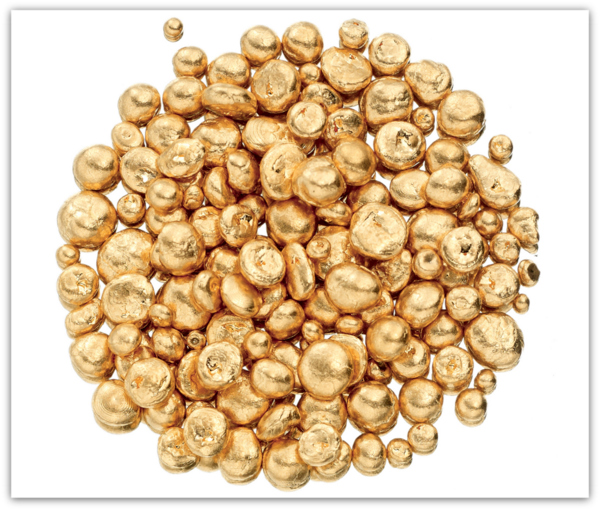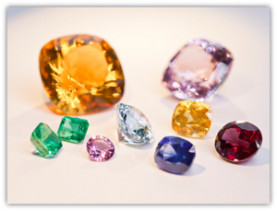
This is a guestpost from Tara Gould, a freelance writer who covers green living, sustainability and ethical business.
Behind the dazzling collection of cut and crafted jewels and gold that twinkle on the silk lined displays of your average jewellery shop window, lies a tragic story.
Most of us have heard of ‘blood diamonds’, if not from the Leonardo DiCaprio film of the same name – then at least through the ethical consumer grapevine. Mined in war zones in developing countries, and then traded by warlords to finance conflicts, blood diamonds are not the only area of concern.
Inhumane and unethical processes lace the precious metal and gem industry.
For most of us, buying an expensive item of jewellery isn’t going to be something we take lightly, or do very often. Usually it’s an occasional purchase related to a milestone celebration or a wedding. Surely the thoughtfulness that drives a consumer’s desire to get it right should permeate ethical as well as aesthetic considerations?
A flair for fair
But consumers are becoming more discerning:
“Interest in ethical jewellery is growing year on year, particularly around engagement rings and wedding bands. These are lifetime purchases, and clients are more likely to take time to research what they are buying into” says David Rhode of London based bespoke ethical jewellers Ingle & Rhode.
This is a claim backed up by eco wedding site Ethical Weddings who interviewed a number of dedicated ethical jewellers and the results confirm that the demand for trouble free jewellery is mounting.
Irresistible allure
The world’s monetary exchange system once operated under the gold standard, and this seemingly celestial metal has been used historically as a symbol of virtue, status, wealth and beauty. Gold is ductile, malleable, resistant to tarnishing and corroding, and with a colour and luminosity reminiscent of our most powerful star. It’s little wonder that gold found its place as one the world’s most valuable materials.
But behind the glister of a 14, 18 or 22ct hallmark there is a sullied story.
Grubby gold
To produce enough gold for merely one ring, industrial-scale gold mining produces on average 20 tonnes of waste, often very toxic, and mostly dumped into local waterways and environments.
As a report carried out by the No Dirty Gold campaign illustrates, gold mining involves, “massive pollution, huge open pits, devastating community health effects, worker dangers and, in many cases, human rights abuses that have become hallmarks of gold and metals mining in countries such as Peru, Indonesia, Ghana and in parts of the United States.”
Labourers work long hours for little pay in terrible conditions and in some cases children are forced to work, and become ill as a result of exposure to massive amounts of mercury and lead. Meanwhile deadly metals also seep into the land from the mines and affect the health of local communities.
The tyranny of ignorance
The continuing dominance of unethical practises within the precious metal and gem trade prove that there are still a lot of people out there who don’t think twice about where their gold ring or diamond necklace has come from.
Commonly, the issue is a lack of clear, reliable information, and many of the high street jewellery retailers are misleading or ambiguous when questioned about the provenance and manufacture of their products, as illustrated by the thought provoking BBC Dispatches documentary ‘The Real Price of Gold’.
‘With this ring I thee…hang on a minute, is this ring Fairtrade and Fairmined?!’
Set up in March 2010 the Fairtrade and Fairmined gold standards is the world’s first independent ethical certification system for gold. It supports the lives of small scale artisanal miners and their communities by ensuring that standards on safety, worker rights and the environment are met.
The organisation also pumps extra funds into mining communities to build secure futures for their families through education, medical care or environmental projects.
Dodgy diamonds
 In December 2000 the United Nations General Assembly founded an international certification scheme for rough diamonds called the Kimberley Process Certification Scheme (KPCS) as a way of monitoring and curtailing the conflict diamond trade, and its associated human rights violations.
In December 2000 the United Nations General Assembly founded an international certification scheme for rough diamonds called the Kimberley Process Certification Scheme (KPCS) as a way of monitoring and curtailing the conflict diamond trade, and its associated human rights violations.
The steps the Kimberley Process has made to prevent ‘blood’ diamonds from entering the market are undoubtedly important. But unethical diamonds from Zimbabwe and the Cote d’Ivoire, where atrocious abuses of human rights occur, can still be found, innocently gleaming on your own high street jewellers’ shelves.
Consequently the Kimberley Process has come up against severe criticism. Daniel Bekele, Africa director at Human Rights Watch urges that a revision of the scheme is necessary in order to stop these atrocities, “The Kimberly Process needs to address the ongoing human rights abuses in Zimbabwe’s Marange fields, and the lack of transparency by mining companies operating there.”
Crystal Clear – demand transparency
It seems the only place where it is possible to source ethical diamonds is Canada.
Strict regulations ensure that the miners receive a fair price for their work and are treated humanely.
Ingle and Rhode’s Canadian diamonds are fully traceable, both cut and polished according the standards established by the Council for Responsible Jewellery. Their coloured gems are ethically sourced, then cut and polished in ethical working conditions, where wages are calculated on fairtrade principles.
Likewise, the principles of eco jewellers Green Karat guarantee that all their gold and precious gems are ethically mined and produced. Check out their handy diamond decoder to help you make an informed choice: http://www.greenkarat.com/education/learn-about-diamonds-decoder.asp.
Brilliant Earth based in San Francisco, offer conflict-free diamonds from Canada, ethical origin sapphires, and eco-friendly gold, platinum and sterling silver.
Conscious buying
Armed with the truth, most people are keen to do the right thing. Mostly it’s a simple case of asking the right questions: Is this gold fairtrade and fairmined? Where were these diamonds mined and are they conflict and cruelty free? And if you don’t get the answers you were hoping for – recycled and vintage jewellery is always a stylish option!
_______________
Images in this post are courtesy of jeweller Ingle & Rhode.



The general meaning of ethics: rational, optimal (regarded as the best solution of the given options) and appropriate decision brought on the basis of common sense. This does not exclude the possibility of destruction if it is necessary and if it does not take place as the result of intentional malice.*.
Our website
<http://caramoan.ph
The general meaning of ethics: rational, optimal (regarded as the best solution of the given options) and appropriate decision brought on the basis of common sense. This does not exclude the possibility of destruction if it is necessary and if it does not take place as the result of intentional malice.*.
Our website
<http://caramoan.ph